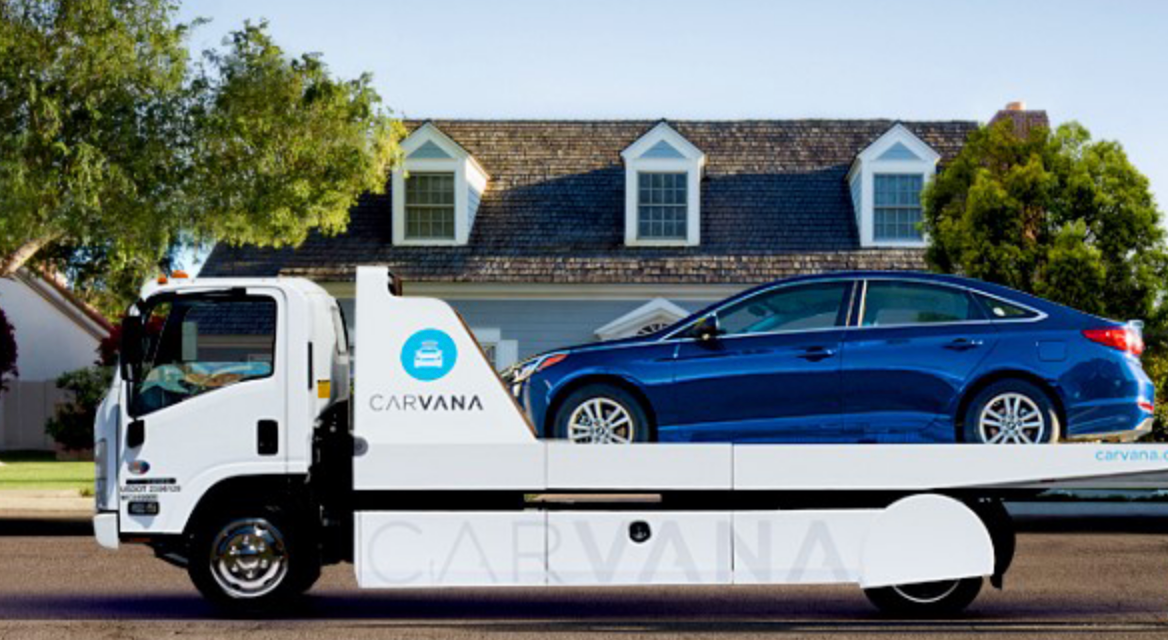As demand slips, online used car dealers like Carvana face a rocky road

In a U-turn from early in the pandemic, consumers are pumping the brakes on buying used vehicles — and online car dealers like Carvana are feeling the heat.
Carvana, the online marketplace known for its car vending machines, is suffering from industry-wide dips in demand as drivers shift their spending priorities. Last week, the company reported an 8% year-on-year loss in units sold for the third quarter, as well as a 3% loss in revenue from this time last year. Meanwhile, other big used vehicle marketplaces are also seeing sales stumble heading into the new year.
Used car sales are down from record-breaking rates in 2021 when supply chain problems and a worldwide shortage of microchips caused prices to skyrocket. Those higher prices have contributed to the overall rise in inflation, as roughly 40% of U.S. households buy a car each year, according to CNN Business. For some consumers, vehicle purchases are taking a back seat as items like housing and groceries shoot up in cost. Last month, used vehicle sales were down 9.2% from the same time in 2021, according to Cox Automotive.
“Cars are an expensive, discretionary, often-finance purchase that inflated much more than other goods in the economy over the last couple of years, and is clearly having an impact on people’s purchasing decision,” Carvana CEO Ernie Garcia said in an earnings call on Friday.
While Garcia said Carvana is making “strong operational progress,” he added that rising interest rates and the depreciation of vehicles have “harmed affordability.” “We’re building our plans around assumptions that the next year is a difficult one in our industry and in the economy as a whole,” he said.
Carvana’s had a tumultuous six months. In May, the company bought KAR Global’s ADESA U.S. auction subsidiary for $2.2 billion in cash. For the quarter ending in September, Carvana reported a net loss of more than a fifth of that. However, Carvana has made some progress on normalizing its website inventory. According to its letter to shareholders, Carvana had $3.1 billion in inventory for the period ending Dec. 31, 2021 and $2.6 billion for the period ending Sept. 30, 2022.
Overall, though, “the balance sheet cash burn was uncomfortable for investors, and other sources of liquidity they tout (floorplan, real estate) aren’t substitutes for cash to run the business (paying interest on the debt, investing in CapEx [capital expenditures]),” Chris Pierce, research analyst at Needham & Company, said in an email to Modern Retail.
Ad position: web_incontent_pos1
The fallout from earnings has been tough for Carvana’s bottom line. The company lost approximately $992 million in market value on Friday alone, according to The Street, the same day Morgan Stanley’s Adam Jonas said Carvana could become a $1 stock. Carvana’s shares are down nearly 97% year to date, and its father-and-son executives have lost a combined $18 billion this year, according to Bloomberg.
Going forward, “I think that there needs to be some action associated with shorting the companies,” Seth Basham, managing director of equity research at Wedbush Securities, told Modern Retail. “That could be either selling of real estates or it could be a capital infusion, potentially, by some of the insiders, the Garcias, as well as outside investments.”
Other dealers are flagging issues with used vehicles in their earnings. Last month, AutoNation said its adjusted net income for the quarter fell by 7%, largely because of lower profits from used vehicles. Carmax says its revenue jumped 2% year-on-year in the second quarter but that it sold 6.4% fewer used vehicles than before.
In a similar vein to Carvana, Carmax’s CEO Bill Nash cited headwinds such as “vehicle affordability challenges that stem from widespread inflationary pressures, as well as climbing interest rates and low consumer confidence.” On Carmax’s earnings call, he said the company has been “adjusting inventory to more efficiently incorporate older vehicles.”
Despite overall challenges for the used car market, experts say the business — especially online — is here to stay. Carmax, for example, said online sales accounted for 11% of total sales in the second quarter, up from 9% last year.
Ad position: web_incontent_pos2
“Carvana and Carmax have inventory advantages, and buyers can set up financing online faster and at 10 p.m. on a Tuesday night, versus taking time to go to a dealership,” Pierce said. “If a consumer wants to go do a test drive, they can do that (at Carmax, not Carvana), but it’s a better mousetrap as far as I am concerned. Omnichannel has some advantages. But online only, I don’t see as overly disadvantaged.”
Today, more than 90% of people buying used cars are starting the process online, according to Basham. “People do their research on cars online, almost entirely,” he said. “I think it’s a structural trend that we’ll see even beyond the pandemic, especially as people get more and more comfortable buying big ticket items online.”

